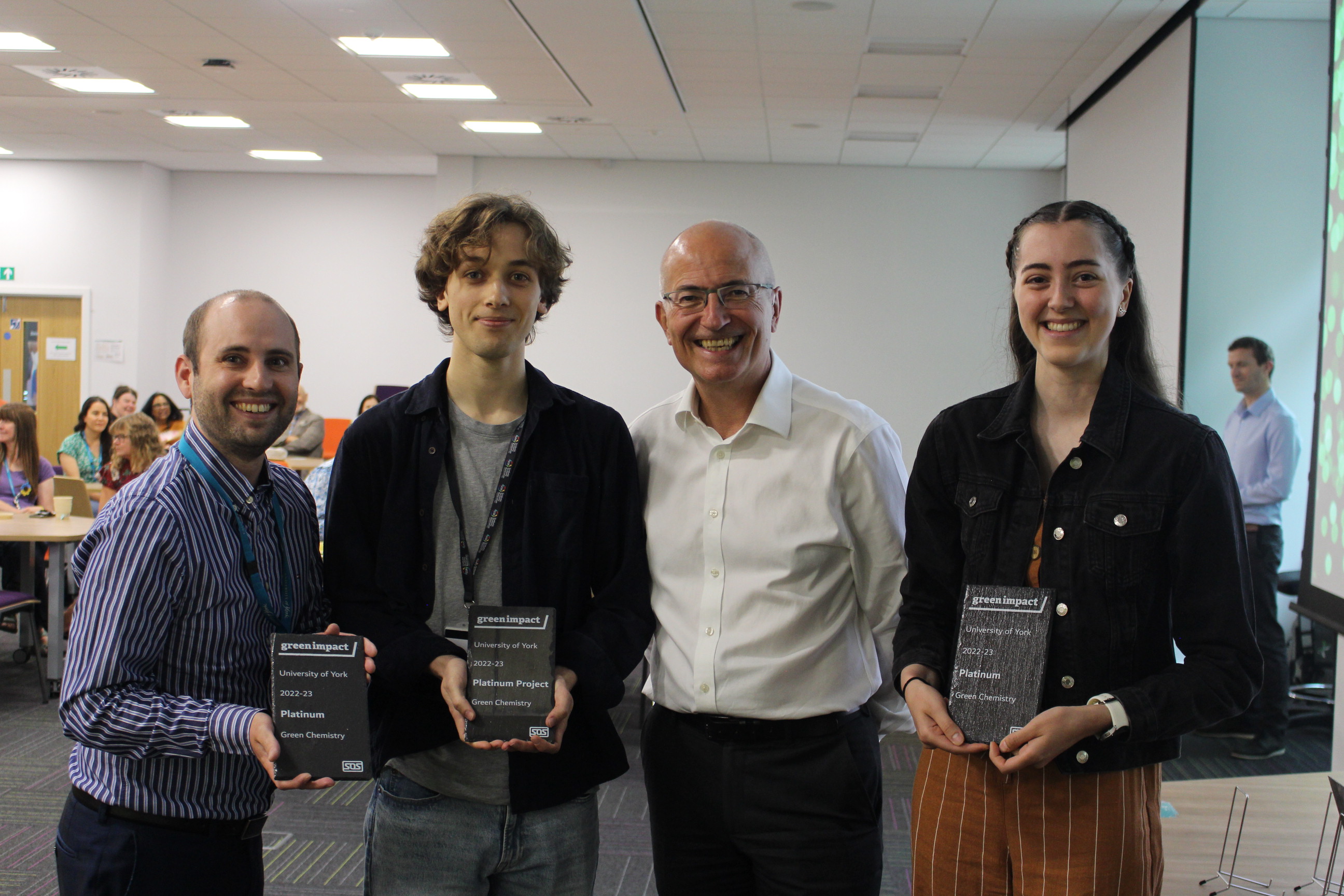Green Impact spotlight: Green Chemistry
Introducing the Green Chemistry team, dedicated to exploring the utilisation of hydrogen carrier gases for a more sustainable future.
.jpg)
We’re excited to share another Green Impact team project with you. The Green Chemistry Centre of Excellence in the Department of Chemistry has been awarded platinum in this year’s Green Impact Awards for their project investigating the benefits of switching carrier gases from helium to hydrogen as a way of greening up.
We asked the team to share more about their project. Read their story below to find out more:
Tell us a bit about your Green Impact project.
The project aims were to Green up Gas Chromatography Analysis by investigating the environmental impact and carbon footprint of switching carrier gas by looking at helium production and transportation compared to hydrogen production from water.
The project also aimed to align with the UN Sustainable Development Goals (SDGs) 7 (Affordable and Clean Energy), 9 (Industry, Innovation and Infrastructure), 12 (Responsible Consumption and Production), and 13 (Climate Action).
Tell us about your project outcomes and successes.
As a result of this project, we have switched carrier gases for our 4 Gas Chromatography-Flame Ionization Detections (GC-FIDs) in the Green Chemistry Centre and we have shared our findings with the wider University via the Tech York Network, which includes all of the technical staff across the University of York.
On comparing helium and hydrogen as a carrier gas for GC-FID we have also concluded:
- Using hydrogen is cheaper than helium, with a yearly cost of £2,122.92 (excluding initial cost of the generator) compared to a potential £17,760 for helium.
- The hydrogen generation from water has a lower carbon footprint than helium canisters, with hydrogen generation totaling 167.8 kgCO2e per year compared to 398.4 kgCO2e per year for helium.
- Hydrogen generation overcomes the problem with using the rapidly-depleted, finite-resource of helium.
- Although hydrogen gas is more hazardous than helium, generation of hydrogen in-lab is a safer option than using hydrogen cylinders and is regularly monitored for leaks, so this conflict to use is lessened.
With these findings, we recommend implementing hydrogen as a carrier gas. We believe that the trivial hazard disadvantage of hydrogen compared to helium is outweighed by the advantages in economics and environmental factors.
What do your team hope to do in the future?
In the future we will continue our work on carrier gases, focusing specifically on some practical elements, such as:
1. The Safety associated to ensure storage and use doesn’t put equipment users at unnecessary or additional risk.
2. Environmental impact of obtaining the gas: carbon footprint determination of the gas acquirement, whether supplied in a cylinder or, if possible, generated in-lab.
3. Impact on the instruments: the gas might degrade the components of the instruments faster/slower than the alternative gases so will need to be considered for long-term use. This might require a longer-term trial to monitor the rate that replacement parts are required when using each different gas.
We also hope to complete other lab initiatives too, including:
- A cost benefit analysis of installing chillers in the lab rather than using constant running water in order to save all the galleons of wasted water used for cooling.
- A Green Lab Solutions Day in January 2024. This day will bring together suppliers from industry with academia to investigate conducting research more sustainably (Including demonstrations in the lab).
- Track and reduce the usages of Single Use Plastics where possible, including pipette tips, centrifuge tubes and other disposable plastics.
- Calculating the carbon footprint of our GCCE labs, raise awareness and try to look at solutions to reduce this.
A huge congratulations to the Green Chemistry team for their successes so far. We look forward to catching up with the team in the future to see their process on implementing hydrogen, and to hear about their other projects to becoming greener.
